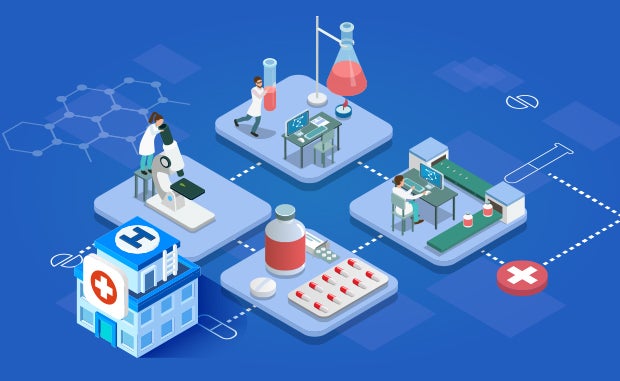

Repurposing Knowledge Accelerates Health Care Innovation

For all the damage that the COVID-19 pandemic has caused to the health of millions of people worldwide, the U.S. and global economies and health care provider balance sheets everywhere, it has had one significant positive impact: accelerating innovation.
Conventional approaches to developing drug therapies and vaccines that once entailed lengthy processes are now being revised at hyperspeed. Manufacturers of autos, appliances, whiskey, cosmetics and other goods quickly shifted to making things like ventilators, personal protective equipment and hand sanitizer — products that were never part of their traditional offerings.
All of these examples of accelerated innovation share one thing in common: They all involved repurposing knowledge, notes a recent MIT Sloan Management Review report.
The five principles applied in these ultrafast innovative initiatives, the authors note, have important applications in other fields as well, including health care. Keep these points in mind as your teams seek rapid, innovative solutions to suddenly emerging problems.
- Grasp your innovation problem. Health care managers must quickly assess and understand the problem that innovation should target. The key is matching the problem with existing resources, ideas, knowledge and technology.
- Map your knowledge and resources. To make repurposing work, you’ll need an inventory of existing products, facilities, databases, software, talent and expertise. Repurposing is most successful when organizations draw readily on available resources and knowledge, some of which might be seen as having unattractive side effects or byproducts. An example is off-label prescribing of a marketed drug to treat diseases where only anecdotal evidence exists about the drug’s potential efficacy and no other treatment options are available.
- Leverage emerging technologies. Artificial intelligence, data analytics, cloud computing and other emerging technologies can help spur faster innovation. These digital platforms enable users, experts, funders and public and private organizations to share information and collectively create knowledge. Machine learning coupled with big data also can rapidly identify promising links between needs and solutions , such as the AHA partnership with Kaiser Permanente, consulting firm Kearney, Microsoft, Merit Solutions, Goodwill and UPS to launch Protecting People Everywhere, powered by HealthEquip™, a smart app that matches individuals and organizations donating PPE with local hospitals based on needs criteria.
- Encourage open and cross-disciplinary collaboration. This crucial step should go on both inside and outside your organization. Consider launching crowdsourcing efforts, open calls or innovation contests to discover new ways of using existing products, services and facilities during a crisis.
- Rapidly integrate end users. Don’t wait for market research to inform the development of products or services that meet the needs of end users. Instead, promote communication channels that make it easier for health care workers to voice their needs and collaborate with others outside the organization, with managers rapidly addressing these inputs in the innovation process. For example, physicians joining specialized social media groups can develop answers in real time to deal with the uncertainty of treating COVID-19 patients.



